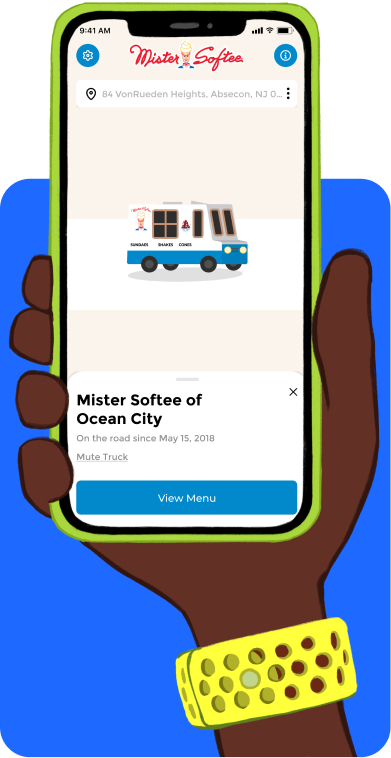Low-code app development has been a hot topic over the past year or so. As more and more businesses are forced to digitize, they want more cost-effective, user-friendly, and simple ways to manage the vast tech infrastructures that they need.
In addition, there simply are not enough tech professionals to keep up with the skyrocketing tech needs of organizations as the way we do business evolves.
Many have said that low-code app development is the complete solution, but some IT professionals and app developers have some reservations.
Let’s take a look.
What Are Low-Code Apps?
If you want to learn more about low-code and no-code, we have talked about them on the blog before, as well as their place in the citizen developer movement.
For the purpose of this post, we are going to keep things brief.
Low-code platforms use graphic visual tools to allow users to drag and drop portions of reusable code, rather than having to enter it manually over and over again. All processes are shown visually in a graphical interface.
This is much simpler than traditional manual coding and has basically all of the same uses.
It includes updating legacy systems and building a wide range of apps. There are many reasons why companies are employing these platforms.
The Future of Low-Code
Businesses have already cemented their obsession with Low Code. According to a report by Forrester, low-code platforms accounted for about 75% of all app development done in 2021. In 2020, this number was only 40%.
Businesses feel that it is cheaper, easier, and more efficient. However, IT professionals have raised some concerns about the potential safety risks of going almost entirely low-code.
For example, one common issue is individuals and departments using unapproved low code.
This leads to communication breakdowns, security risks, and wasted time and resources. However, as businesses have already chosen low-code, we will likely discover more of its inherent problems and benefits over the next few years.
Here are some of the issues that professionals are already contending with.
Vendor Lock-In
This is one of the biggest annoyances and potential drawbacks of low-code development platforms.
A vendor lock-in, commonly known as proprietary lock-in or customer lock-in, makes a customer depend on one vendor for all its products and services. This restricts companies to one vendor, and a new one cannot be used without expensive switching costs.
While many vendors claim that their products don’t have vendor lock-ins, this is not always the case. When this happens, companies cannot use their software without paying licensing fees.
As many vendors only make a profit if people keep using their platforms, many make these platforms so convoluted that it is impossible to maintain an application you create with their platform without it.
If you create an app with a platform, you essentially may never be able to take it off of that platform. You don’t own your own business’s app.
Unless, you want to start over from scratch you will have to say with that vendor.
Needing to start over could be a huge disruption to your business, whether you use internal or customer-facing apps.
More Limitations

When developers, or often even employees untrained in development, are asked to create custom software using low-code platforms, they are limited by whatever that platform allows.
Many have limited hardware and native language capabilities. Their interfaces also pose limitations.
If a business does not choose the right low-code platform for their needs, as all are different, developers may not be able to use it to deliver the specific functionality they want.
According to Akarsh Singh, CEO and co-founder, TSAARO:
“Developers are only limited by the hardware and the capabilities of the native language when creating custom software. The amount of functions you can implement in a low-code development tool is limited. It is a quick way to create apps, but you do not have a lot of options if you want to try something new.”
Essentially, when an app is created using low-code, it solves one problem but creates others.
Does it make creating an initial app much easier than before? If a company chooses the right platform: yes.
However, a key part of app development is maintenance. It is not likely that an app can be created and stay the same forever.
The needs of users, enterprises, and consumers are always shifting. Technology itself is also always changing.
Ultimately, creating an app that you cannot freely change over time creates more problems than it solves.
Also, if you use one of these platforms to make a customer-facing application as a part of your business, and the platform has issues, it will reflect badly on your reputation.
Your consumers likely won’t care or understand that the issues of the platform are not your fault, and you have no control over them. They will just see it as your business being dysfunctional.
With so much competition out there, it will be easy for them to move on.
Low-Code Makes Things More Difficult For IT Professionals and DevOps
On the surface, low code solves the problem of users having to interact with confusing and repetitive strings of code. However, this is actually a whole other problem.
If you use a low-code platform, you do not actually have access to the code that your business runs on. This means that if there is an issue, your team cannot fix it.
While many forms of development are open source or more transparent, low-code platforms are usually not.
Essentially, with traditional coding, your team will have direct control over how to manage, update, employ, and troubleshoot it. With a low code platform, a business gives all of that away.
If your needs evolve beyond the platform you have chosen, or the requirements of app stores or device makers evolve faster than the platform, you will have big problems.
Security Issues
Low-code solutions do include security protocols. However, experts say that most simply do not provide the protection provided by standalone development.
For one, when a business designs its own specific security measures, these meet its needs directly. They also have complete control over it.
When a business outsources all of this and gives up control of the code beneath the graphics, it loses control.
The business no longer entirely controls its data security or access to source code. If something goes wrong, they will have to rely on the vendor.
More Apps Faster Now, More Problems Later

While no-code platforms can provide a quick solution to businesses who want apps now, they leave businesses potentially vulnerable in some important ways in the future.
Not having control over the security, data, and internal workings of your own business is simply not a good place to be.
Some other things to consider are that it may be impossible to update your app as you need in the future, and if you want to change vendors you may lose your app entirely.
Also, many low-code companies use low prices initially to lure in customers. However, without a long-term contract, these prices can rise at any time. This may make long-term budgeting and planning difficult.
Final Thoughts
There are definitely a range of pros and cons to consider when it comes to low-code app development. As it is already quite popular, we will likely see more and more of it with time.
The fact of the matter is, that there simply aren’t enough tech professionals in the US to keep up with the exponentially growing needs of most enterprises.
On these grounds alone, it makes sense that many organizations are seeking low-code and no-code solutions.
As more and more businesses use it, we will learn more about how it functions within organizations and what users can really do with it.
What do you think? Comment below.
Since 2009, we have helped create 350+ next-generation apps for startups, Fortune 500s, growing businesses, and non-profits from around the globe. Think Partner, Not Agency.
Find us on social at #MakeItApp’n®
















